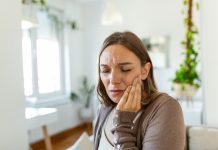
Falling down might seem like a simple mishap, but for many, especially the elderly, it can signal a significant risk of something much more serious: fractures.
A new study titled published in Osteoporosis International, has shed new light on how a history of falls can predict the likelihood of fractures. This research could change the way doctors evaluate and prevent fractures, particularly in older adults.
Pooling data from 46 prospective cohort studies that included over 900,000 individuals, this international meta-analysis has made a compelling case for the inclusion of previous falls in patient histories when assessing fracture risk.
The findings are clear: those who have fallen in the past year face a significantly higher chance of suffering from fractures, including osteoporotic fractures, major osteoporotic fractures, and hip fractures.
Traditionally, tools like the FRAX (Fracture Risk Assessment) Tool have been used to estimate a person’s risk of fracturing a bone within the next ten years.
However, until now, previous falls weren’t considered in these assessments. The study’s revelations suggest that incorporating fall history could greatly improve the accuracy of such risk evaluations.
The lead author of the study, Douglas P. Kiel, M.D., MPH, from the Musculoskeletal Research Center and the Hinda and Arthur Marcus Institute for Aging Research, highlighted an interesting twist in their findings: while falls are a significant risk factor for both men and women, they pose a slightly higher risk for men.
This challenges the common perception that women are always at a greater risk of fractures due to issues like osteoporosis.
Key findings from this extensive study include:
- A clear link between a history of falling and an increased risk of fractures. This connection was significant across various types of fractures, such as clinical, osteoporotic, and hip fractures.
- A stronger association between falls and fracture risk in men than in women, which adds an interesting layer to our understanding of fracture risks across genders.
- The independent significance of falls as a risk factor, regardless of bone mineral density. This means that even those with healthy bones can be at increased risk if they have a history of falling.
This research emphasizes the importance of falls in the context of fracture risk and suggests that they should be a key factor in assessments like FRAX.
By doing so, healthcare providers can better identify individuals at risk and implement strategies to prevent falls and fractures, ultimately improving patient outcomes and possibly saving lives.
With this new understanding, it’s clear that preventing falls should be a priority in healthcare strategies, especially for older adults.
By recognizing the risks and taking steps to minimize them, we can protect vulnerable populations from the potentially life-altering consequences of fractures.
If you care about pain, please read studies about vitamin K deficiency linked to hip fractures in old people, and these vitamins could help reduce bone fracture risk.
For more information about wellness, please see recent studies that Krill oil could improve muscle health in older people, and eating yogurt linked to lower frailty in older people.
The research findings can be found in Osteoporosis International.
Copyright © 2024 Knowridge Science Report. All rights reserved.



